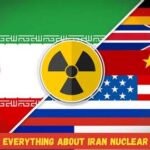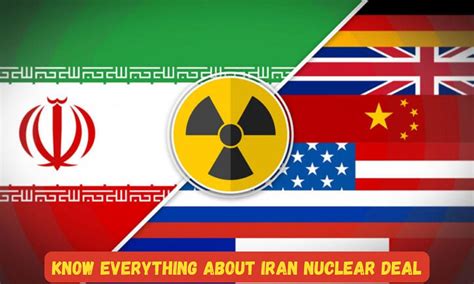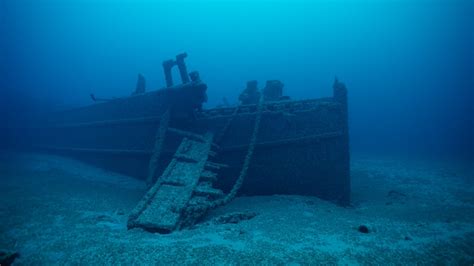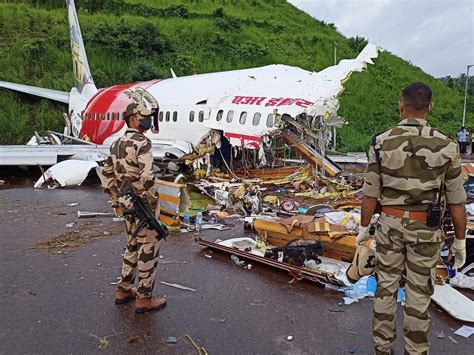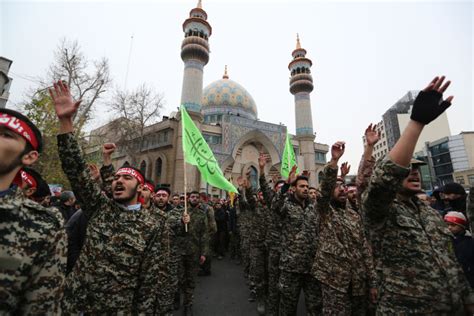
Amid escalating regional tensions, reports have surfaced that Iran’s Supreme Leader Ayatollah Ali Khamenei has retreated to a high-security bunker, fueling speculation about his strategic intentions and the stability of the Islamic Republic. Some analysts interpret the move as a precautionary measure against potential threats, signaling a “poison pill” approach where Khamenei aims to ensure the survival of the regime at any cost, while others view it as a “power play” designed to project strength and deter adversaries.
The unconfirmed reports, widely circulating within Iranian dissident circles and amplified by some international media, indicate that Khamenei, 85, has relocated to a fortified command center deep beneath the ground. This facility, purportedly equipped with advanced communication systems and defenses, is believed to be located in a remote and undisclosed location. The timing of this alleged move coincides with a period of heightened tensions in the Middle East, marked by ongoing conflicts involving Iranian proxies and increasing threats from both regional rivals and international actors.
“If true, Khamenei’s relocation suggests a profound level of concern within the Iranian leadership regarding their vulnerability,” explains Dr. Alireza Nader, a senior fellow at the Foundation for Defense of Democracies, specializing in Iranian politics. “It could indicate a fear of potential military strikes or internal unrest that could destabilize the regime.”
The Iranian government has not officially commented on these reports, maintaining its usual stance of strategic ambiguity. State-controlled media outlets have continued to portray Khamenei as actively engaged in his daily duties, attending meetings with government officials and delivering speeches. However, the lack of explicit denials has only served to amplify the rumors and fuel further speculation.
The reports come at a delicate time for Iran. The country is grappling with a severe economic crisis, exacerbated by international sanctions and internal mismanagement. Public discontent is simmering, with sporadic protests erupting across the country in response to rising prices and widespread corruption. Furthermore, Iran’s nuclear program remains a major point of contention with the international community, with negotiations to revive the 2015 nuclear deal stalled.
The alleged relocation of Khamenei raises several critical questions. Is this a genuine response to a credible threat, or is it a calculated move to consolidate power and project an image of unwavering resolve? What implications does this have for the future of Iran and its relations with the rest of the world?
Possible Interpretations: Poison Pill or Power Play
The interpretation of Khamenei’s alleged move is divided among analysts and observers.
Poison Pill Scenario:
According to this perspective, Khamenei’s retreat to a secure bunker represents a “poison pill” strategy. This suggests that he is preparing for a worst-case scenario in which the survival of the Islamic Republic is at stake. By relocating to a fortified command center, Khamenei aims to ensure that he can continue to exercise control and direct operations even in the event of a major military attack or widespread internal unrest.
“The ‘poison pill’ approach implies that Khamenei is willing to sacrifice everything to preserve the regime,” says Dr. Nader. “This could include escalating regional conflicts, accelerating the nuclear program, or cracking down on dissent with even greater brutality.”
This scenario raises concerns about the potential for further instability in the region. If Khamenei believes that the regime is facing an existential threat, he may be more inclined to take drastic measures to defend it, even if those measures carry significant risks.
Power Play Scenario:
Another interpretation is that Khamenei’s alleged move is a “power play” designed to project strength and deter potential adversaries. By showcasing his ability to operate from a secure and impregnable location, Khamenei may be attempting to send a message to his rivals that he is not vulnerable and that any attempt to destabilize the regime will be met with a swift and decisive response.
“This could be a way for Khamenei to demonstrate that he is in control and that the regime is prepared for any eventuality,” explains Professor Sanam Vakil, director of the Middle East and North Africa program at Chatham House. “It could also be a signal to internal factions that he is firmly in charge and that any challenges to his authority will not be tolerated.”
This scenario suggests that Khamenei is primarily concerned with maintaining his grip on power and deterring any potential threats to his rule. It does not necessarily imply that he is preparing for a major conflict, but rather that he is using this perceived move to consolidate his position and project an image of strength.
Implications for Regional Stability
Regardless of the true motivation behind Khamenei’s alleged move, it has significant implications for regional stability. The perception that the Iranian leadership is preparing for a potential crisis could escalate tensions and increase the risk of miscalculation.
“The region is already on edge,” says Dr. Nader. “Any perceived escalation by Iran could trigger a response from its rivals, leading to a dangerous cycle of escalation.”
The United States and its allies in the Middle East, including Israel and Saudi Arabia, are closely monitoring the situation. They are likely to take steps to deter any potential aggression by Iran and to reassure their own populations.
Background: The Evolution of Iranian Security Measures
The reports of Khamenei’s relocation should be viewed within the context of Iran’s long history of security concerns and defensive preparations. Since the 1979 Islamic Revolution, the Iranian leadership has been acutely aware of the potential threats to its survival, both from external enemies and internal dissent.
During the Iran-Iraq War (1980-1988), Iran developed an extensive network of underground facilities to protect its critical infrastructure and leadership from Iraqi air strikes. These facilities included command centers, missile storage sites, and nuclear research facilities.
In recent years, Iran has further expanded its underground infrastructure, investing heavily in the construction of new tunnels and bunkers. These facilities are designed to withstand a variety of threats, including conventional bombs, precision-guided missiles, and even nuclear weapons.
The construction of these underground facilities reflects Iran’s long-standing belief that it is a target of hostile forces and that it must take all necessary measures to protect itself. It also reflects a deep-seated distrust of the international community and a determination to maintain its independence and sovereignty.
The Economic and Social Context
The reports of Khamenei’s relocation come at a time of significant economic and social challenges in Iran. The country is grappling with a severe economic crisis, exacerbated by international sanctions and internal mismanagement.
The Iranian economy has been hit hard by the reimposition of US sanctions following the Trump administration’s withdrawal from the 2015 nuclear deal. These sanctions have restricted Iran’s ability to export oil, access international financial markets, and attract foreign investment.
As a result, the Iranian economy has contracted sharply, and unemployment and inflation have soared. The value of the Iranian currency has plummeted, eroding the purchasing power of ordinary Iranians.
The economic crisis has fueled public discontent and led to sporadic protests across the country. These protests have been met with a harsh response from the government, which has arrested thousands of people and used lethal force to suppress demonstrations.
The combination of economic hardship and political repression has created a volatile situation in Iran. The reports of Khamenei’s relocation suggest that the Iranian leadership is aware of the risks and is taking steps to prepare for potential unrest or instability.
The Nuclear Dimension
Iran’s nuclear program remains a major point of contention with the international community. The 2015 nuclear deal, formally known as the Joint Comprehensive Plan of Action (JCPOA), was designed to prevent Iran from developing nuclear weapons in exchange for the lifting of sanctions.
However, the Trump administration withdrew from the JCPOA in 2018 and reimposed sanctions on Iran. In response, Iran has gradually rolled back its commitments under the deal and has increased its uranium enrichment levels.
Negotiations to revive the JCPOA have been stalled for months, with Iran and the United States unable to agree on the terms of a new agreement. The failure to revive the JCPOA has raised concerns that Iran could be on the path to developing nuclear weapons.
The reports of Khamenei’s relocation could be interpreted as a signal that Iran is prepared to accelerate its nuclear program if it feels threatened. This would further escalate tensions in the region and increase the risk of a military conflict.
The Role of Iranian Proxies
Iran has a network of proxy groups across the Middle East, including Hezbollah in Lebanon, Hamas in Gaza, and the Houthis in Yemen. These groups are armed, trained, and funded by Iran, and they serve as an extension of Iranian power in the region.
Iran’s proxies have been involved in numerous conflicts and attacks, including the ongoing war in Yemen, the conflict between Israel and Hamas, and attacks on US forces in Iraq and Syria.
The reports of Khamenei’s relocation could be interpreted as a signal that Iran is prepared to use its proxies to destabilize the region if it feels threatened. This could lead to a further escalation of conflicts and an increase in regional instability.
The Future of Iran
The future of Iran is uncertain. The country faces a multitude of challenges, including economic crisis, political repression, and regional tensions.
The reports of Khamenei’s relocation underscore the fragility of the Iranian regime and the potential for instability. Whether this move is a “poison pill” or a “power play,” it reflects a deep sense of insecurity within the Iranian leadership.
The coming months and years will be critical in determining the future of Iran. The country could either embark on a path of reform and reconciliation, or it could descend further into conflict and isolation. The choices made by the Iranian leadership will have profound implications for the region and the world.
US Response and Strategy
The United States faces a complex challenge in dealing with Iran. The Biden administration has stated its desire to revive the JCPOA and to de-escalate tensions in the region. However, it has also made it clear that it will not tolerate Iranian aggression or the development of nuclear weapons.
The US response to the reports of Khamenei’s relocation will likely be cautious and measured. The Biden administration will want to avoid any actions that could further escalate tensions or undermine the prospects for a diplomatic solution.
However, the US will also need to send a clear message to Iran that it is prepared to defend its interests and its allies in the region. This could involve increasing military deployments, strengthening security cooperation with regional partners, and imposing additional sanctions on Iran.
Ultimately, the success of US strategy towards Iran will depend on its ability to balance deterrence and diplomacy. The US must be prepared to use force if necessary, but it must also be willing to engage in meaningful negotiations to resolve the underlying issues that are driving tensions in the region.
Expert Opinions and Analysis
Experts and analysts have offered varying perspectives on the significance of Khamenei’s reported relocation.
Dr. Alireza Nader of the Foundation for Defense of Democracies believes that the move suggests a profound level of concern within the Iranian leadership. He argues that it could indicate a fear of potential military strikes or internal unrest.
Professor Sanam Vakil of Chatham House suggests that the move could be a power play designed to project strength and deter potential adversaries. She believes that it could be a signal to internal factions that Khamenei is firmly in charge.
Other analysts have emphasized the importance of considering the economic and social context in Iran. They argue that the reports of Khamenei’s relocation reflect the fragility of the Iranian regime and the potential for instability.
Overall, there is no consensus among experts on the true motivation behind Khamenei’s alleged move. However, there is a widespread agreement that it has significant implications for regional stability and that it underscores the challenges facing Iran.
The Need for Verification
It is important to emphasize that the reports of Khamenei’s relocation remain unconfirmed. The Iranian government has not officially commented on the reports, and there is no independent verification of the claims.
It is possible that the reports are exaggerated or even entirely false. It is also possible that the move is temporary and that Khamenei will soon return to his normal duties.
However, the fact that these reports are circulating at all is significant. It suggests that there is a high degree of anxiety and uncertainty within Iran about the future of the regime.
Conclusion
The reports of Iran’s Supreme Leader Ayatollah Ali Khamenei’s alleged relocation to a high-security bunker have sparked intense speculation and debate. Whether this move is a “poison pill” intended to ensure the regime’s survival at all costs, or a “power play” designed to project strength and deter adversaries, the implications for regional stability are significant. The lack of official confirmation from the Iranian government only fuels further uncertainty. Amidst economic challenges, public discontent, and stalled nuclear negotiations, the situation remains highly volatile, demanding careful observation and strategic responses from regional and international actors. The truth behind Khamenei’s actions, and their ultimate impact, will undoubtedly shape the future of Iran and the broader Middle East.
Frequently Asked Questions (FAQ)
1. Why is Iran’s Supreme Leader reportedly moving to a bunker?
The reasons are speculative. One theory is that it’s a “poison pill” strategy, ensuring the regime’s survival in a worst-case scenario like a major attack or internal revolt. Another is that it’s a “power play” to project strength, deter enemies, and solidify Khamenei’s control internally. He may be sending a message that he is in control and the regime is prepared for any eventuality.
2. Is this move confirmed by the Iranian government?
No, the Iranian government has not confirmed these reports. State media continue to portray Khamenei as actively engaged in his duties, but the lack of denial amplifies the rumors.
3. What are the implications for regional stability if Khamenei is indeed in a bunker?
It could escalate regional tensions. It signals a high level of concern within the Iranian leadership. It might trigger responses from Iran’s rivals, leading to a dangerous cycle of escalation and potentially destabilizing the region further.
4. How does Iran’s nuclear program factor into this situation?
The stalled negotiations to revive the 2015 nuclear deal raise concerns that Iran might accelerate its nuclear program if threatened. The relocation report could be interpreted as a signal that Iran is prepared to do so, further escalating tensions.
5. What is the United States’ likely response to this situation?
A cautious and measured response is expected. The US will likely balance deterrence and diplomacy, avoiding actions that escalate tensions while also making it clear that it will defend its interests and allies. This could involve increased military deployments, strengthened security cooperation, and possibly additional sanctions.
